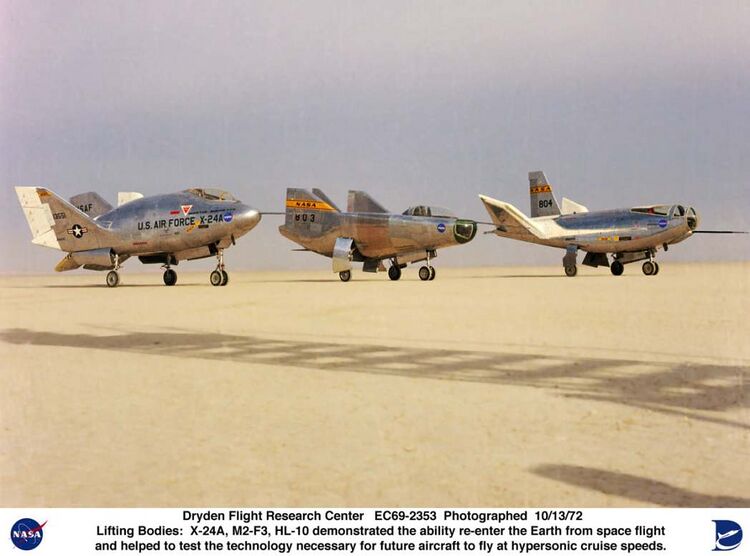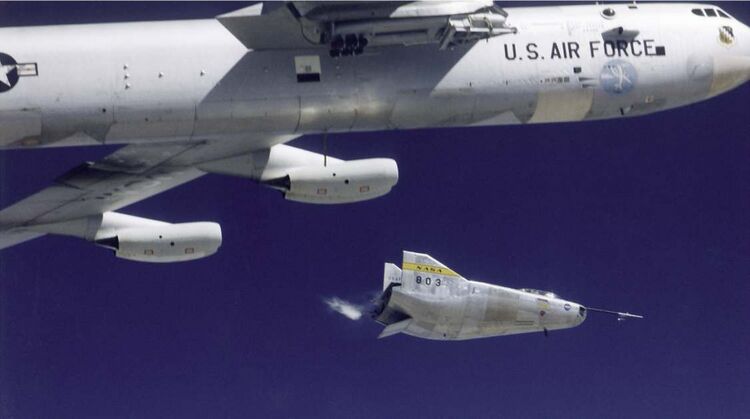Some Space Technology: Difference between revisions
(Created page with "The smaller photos were taken by the author at the U.S.A Smithsonian Institute in 1986, scanned at 75 dpi by a Plustek OpticPro 4800P flatbed scanner, which is now defunct. Li...") |
No edit summary |
||
| Line 25: | Line 25: | ||
[[category:Aviation]] | [[category:Aviation]] | ||
[[category:Holiday]] | |||
[[category:Public]] | |||
Latest revision as of 19:45, 1 October 2022
The smaller photos were taken by the author at the U.S.A Smithsonian Institute in 1986, scanned at 75 dpi by a Plustek OpticPro 4800P flatbed scanner, which is now defunct. Liz and I visited the Smithsonian before we came back to Australia to live.
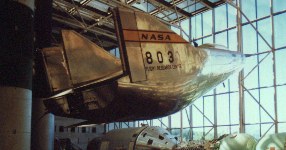
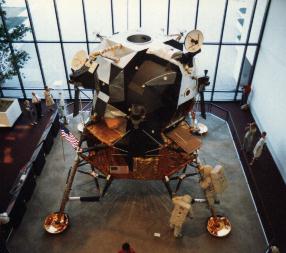
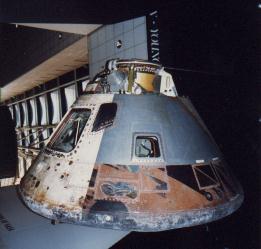
lifting bodies
The larger images were obtained from the NASA archive site many years later. This Lifting Body actually flew in several test flights and was used in research to determine the shape of the space-shuttle. It looks really neat when the landing gear is stowed.
the M2
I found an extract on the NASA website, which has since been moved:
"The M-2 test vehicle was used to study the behaviour of wingless aircraft at speeds up to Mach 1.6 and altitudes up to 73,000 feet (22,000 meters). Air-launched from a B-52 bomber, early flights were unpowered; the craft was boosted to high altitude by a rocket engine on subsequent flights. This M-2 made 16 flights between July 1966 and May 1967. Following a near-fatal crash, it was rebuilt and a center tail fin added for improved stability. Renamed the M2-F3, it completed 27 more flights before being retired in December 1972.
The lifting body had its origins in a U.S. Air Force project, "Dyna-Soar" (Dynamic Soaring Vehicle), to produce a manned space glider that could be launched from a rocket, intercept enemy spacecraft, and then return to Earth. After Dyna-Soar was cancelled in 1963, NASA took over the project and the M-2 became one of three competing designs for a lifting body. The data gained on aerodynamic performance during re-entry would be crucial for the design of the Space Shuttle orbiter."
Yes the quote did say intercept enemy space craft, perhaps they speared them with the pitot-tube!
Now that I know how to fly I would have paid more attention to these devices. I can't see any ailerons on NASA 803 so I guess it must be turned by adverse-roll when what appears to be rudder-flaps on the vertical stabilisers are swung and maybe the horizontal stabiliser out the back acts as a trim tab to push the nose down? The shape of the body may cause the airframe to fly nose-high as the M-2 launch shot suggests the pilot had to deploy a large deflection in the horizontal-flap to bring her nose down. Note how far ahead that the pitot-tube is from the leading edge of the nose and the air-intake for the "rocket" engine. You can see the flames in the B52 shot.
I may have enjoyed working for NASA and trying to fly these types of things but for the fact that there were accidents.
You can read about this Lifting Body in the NASA archives - real test-piloting.
I wonder if I can buy one of those NASA flight-suits from a disposal store; I haven't seen a flight suit in an disposal store in Australia for some time?
